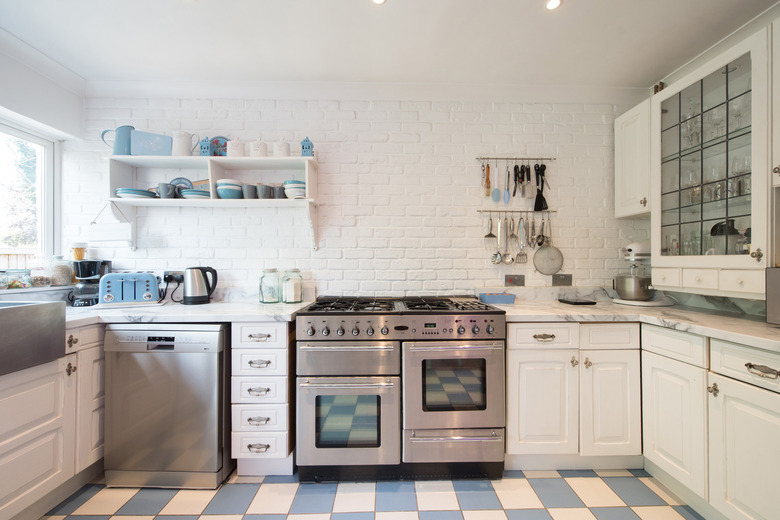How To Paint A Kitchen Stove
Painting your kitchen stove seems like it's not for the faint of heart because it can certainly go awry — but that's true of all painting jobs because they're all about prep work and using the right products. Getting on the right foot before you start prepping and using the proper kitchen stove paint will help you bring new life into your tired old stove.
Selecting Kitchen Stove Paint
Selecting Kitchen Stove Paint
Spray or brush-on paint both work, but they must be epoxy or oil-based enamel or acrylic designed for high-heat use. Spray painting needs good technique, as does brushing or rolling, so it depends on what you're comfortable working with. Companies like Rust-Oleum make paints ideal for this sort of project and they are clearly designated as "appliance paint." Be aware of curing times, because an oil-based enamel paint may cure in as little as eight hours, while water-based may take 30 days.
If painting an old-school cast iron cooker, you'll need cooker paint, like Stove Bright, designed for extremely high-temperature stoves. For a stove top paint repair, your stove's manufacturer likely sells touch-up paint designed to color-match their line of appliances, like these from KitchenAid for their stoves and ranges. Spot repair can be far less work.
Also, always buy more paint than you anticipate needing. Keep your receipts and you should be able to return any unused cans that are not a custom tint. A six-pack of spray paint is only about $25.
Plan Your Project
Plan Your Project
If spray painting, tape off surrounding walls and floors with plastic or paper to protect from overspray. Open the windows and doors for great air circulation. Avoid doing this in humid weather, which can interfere with the paint curing and undo all your hard work.
Decide where you're painting, because there's no need to prep the whole stove if you're only painting the top or warming drawer. Tape off whatever won't be painted and tuck the tape into seams for clean lines between the sections.
Clean and Scour the Stove
Clean and Scour the Stove
Remove all knobs, burners and elements. Tape off the electrical ports for burners and any gas burners so paint can't get inside. For glass top stoves, tape the top off entirely.
Use a degreaser to clean the stove wherever you plan to paint it. Rinse and let it dry. Next, sand with 150-grit sandpaper and wipe it with mineral spirits after each sanding to scuff the surface so the paint will adhere. Sanding the surface is not optional — this is critical to success.
Apply the Paint
Apply the Paint
For spray paint, practice on a tarp or cardboard — you get even, thin layers by spraying 12-18 inches from the surface. For great technique, depress the nozzle away from the stove, then spray across the surface in a nice, steady stroke, all the way across in one motion.
Do two, three or four very thin coats of paint, allowing it to dry in between coats, for a beautiful, durable finish. Never do a single thick layer of paint; it's more likely to flake or peel. This is true of brushing as well. Use a relatively dry brush and apply multiple layers using a steady up/down method; a dryer brush will minimize chances for drips. Allow to dry after each coat.
Do not touch the painted surface until well past the drying time, as fingerprints can be left until it cures. Once the paint is dry, you can remove all the tape and put the burners and knobs back together. But it's best to just walk away and let the stove dry completely for the next day. Plan ahead — order some delivery pizza and get cereal for the morning; you've earned it!
